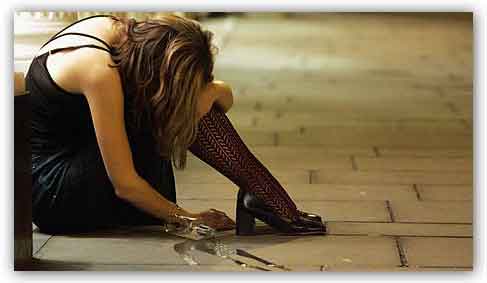|
In the United States, and throughout the world, men
drink more alcohol than women. But a recent analysis
by scientists at the National Institute on Alcohol
Abuse and Alcoholism (NIAAA), part of the National
Institutes of Health, indicates that longstanding
differences between men and women in alcohol
consumption and alcohol-related harms might be
narrowing in the United States.

Researchers led by Aaron White, Ph.D., NIAAA’s
senior scientific advisor to the director, examined
data from yearly national surveys conducted between
2002 and 2012.
“We found that over that period of time, differences
in measures such as current drinking, number of
drinking days per month, reaching criteria for an
alcohol use disorder, and driving under the
influence of alcohol in the past year, all narrowed
for females and males,” says Dr. White. “Males still
consume more alcohol, but the differences between
men and women are diminishing.” A report of the
study by Dr. White and his colleagues is online in
the journal Alcoholism: Clinical and Experimental
Research.
“This study confirms what other recent reports have
suggested about changing patterns of alcohol use by
men and women in the U.S.,” notes NIAAA Director
George F. Koob, Ph.D. Dr. Koob adds that the
evidence of increasing alcohol use by females is
particularly concerning given that women are at
greater risk than men of a variety of
alcohol-related health effects, including liver
inflammation, cardiovascular disease, neurotoxicity
and cancer.
Dr. White and his colleagues found that the
percentage of people who drank alcohol in the
previous 30 days increased for females from 44.9
percent to 48.3 percent, but decreased for males
from 57.4 percent to 56.1 percent between 2002 and
2012.
Over that time, the average number of drinking days
in the past month also increased for females, from
6.8 to 7.3 days, but decreased slightly for males,
from 9.9 to 9.5 days.
Binge drinking by 18 to 25 year olds in college did
not change during the decade under study. But among
18 to 25 year olds not in college, there was a
significant increase in binge drinking among females
and a significant decrease among males, effectively
narrowing the gender gap in binge drinking in this
age group.
Dr. White notes that there was only one measure, for
any age group, for which the male-female drinking
difference actually became greater during the study
period.
“The prevalence of combining alcohol with marijuana
during the last drinking occasion among 18 to 25
year old male drinkers increased from 15 percent to
19 percent,” he says, “while the prevalence of
combining alcohol with marijuana during the last
drinking occasion among 18 to 25 year old female
drinkers remained steady at about 10 percent.”
The authors say reasons for the converging patterns
of alcohol use are unclear and do not appear to be
easily explained by recent trends in employment,
pregnancy, or marital status, as their analyses
controlled for these variables.
Dr. White and his colleagues suggest that additional
studies are needed to identify the psychosocial and
environmental contributors to these changes and to
assess their implications for prevention and
treatment efforts.
See also
Female alcohol use has dramatically increased over a
generation, especially at higher levels of drinking
(2014-07-02)
Link...
Binge Drinking and marijuana use puts teens' at risk
for mental deficits (25/10/2010)
Link...
Grain alcohol incredibly dangerous as Maryland
lawmakers mull ban (2014-02-27)
Link...
Alcohol, energy drink mix tied to urge to drink
(2014-07-28)
Link...
For more infromation
White A, Castle IJ, Chen CM, Shirley M, Roach D,
Hingson R. Converging Patterns of Alcohol Use and
Related Outcomes Among Females and Males in the
United States, 2002 to 2012. Alcohol Clin Exp Res.
2015 Sep;39(9):1712-26
Link...
National Institute on Alcohol Abuse and Alcoholism (NIAAA)
Link...
MDN |